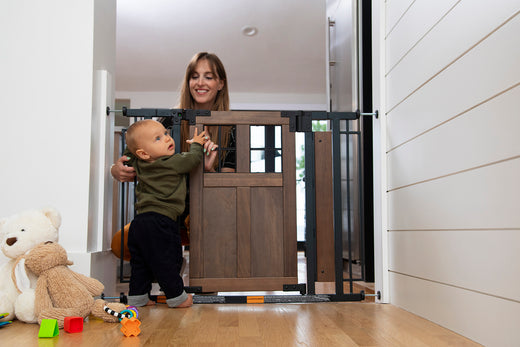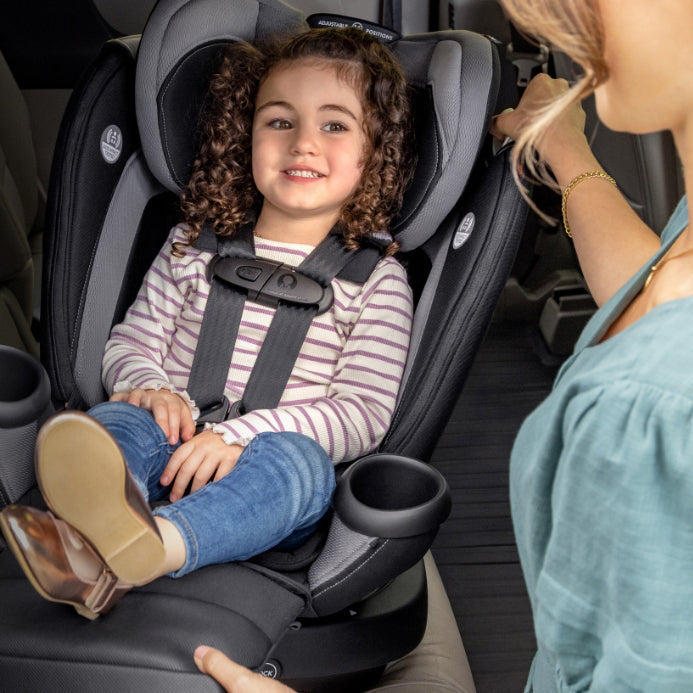
Baby Proofing Checklist: 10 Tips for Playing it Safe
Baby Proofing Your Home
With a newborn, every adoring onlooker will tell you that time flies. And that sentiment is perfectly true of your first sleepless nights with your baby. Before you know it, your curious baby will start getting into everything, from your kitchen cabinets to makeup and even the dog bowl. Here’s a quick checklist to help keep your precious little chaos agent (er, toddler) safe.
-
Baby proofing the furniture
Everyday bookshelves, dressers, TV stands and even baby furniture can be dangerous if they tip and fall over. Be sure to follow instructions for securing furniture to the wall at home. Pay extra attention to this potential peril when traveling, because another home or hotel may not have its littlest guests in mind. (Although you probably shouldn’t secure someone else’s furniture to the wall, you can move more dangerous furniture to a different room or more secure location so that your toddler isn’t tempted to pull or climb on it.) -
Put medicine and cleaning products out of reach
Regular household medicines or cleaning products can result in unintentional poisoning. Keep these items secure in high, out-of-reach places and with locks. There are a variety of cabinet locks on the market, including “no install” plastic locks that fit over cabinet knobs and magnet locks that require a magnetic “key” to open. (Consider bringing a no-install lock with you when traveling to locations that may not be as secure as your own.) -
Baby proofing the kitchen
Keep items like scissors in a drawer that can be locked or up high and secure. When loading your dishwasher, be sure knives are placed with the sharp edge facing down. -
Create safe boundaries
If you have a flight of stairs, or a room that is off limits, investing in a hardware mounted baby gate that can be secured to the wall will help ensure your baby is safe from an unintentional fall and keep them in a “safe zone” free of choking and falling hazards. Play yards and portable play spaces can help you create a safe zone wherever you are. -
Keep fitness equipment off limits
When exercising, it is important to be certain your baby or toddler is not going to unintentionally get too close to the equipment while in use. And when you’re not using your elliptical, treadmill, bike, rower or other equipment, make sure it’s turned off with safety keys removed. Store these machines in a room that is off limits. -
Contain small toys and parts
If you have older children, it will be nearly impossible to rid your home of every small Lego and doll shoe. Try making a special, designated place for your older children to play with—and put away—these tiny choking hazards. If you set a clear boundary, these smaller pieces are more likely to stay in a contained area. -
Watch out for water
Drowning is among the leading causes of unintentional injury-related death for children ages 1-4, and 23% of drownings occur at a family gathering at a pool. Never leave your child unattended near water and be mindful of less obvious dangers—always drain your bathtub and empty baby pools, storing them upside-down immediately after you are done using them. -
Check for poisonous plants
Whether you have a green thumb or not, it will be important to get to know the types of plants, trees, and other foliage in your yard. Some plants and their flowers or berries can be highly poisonous to small children and pets. There are many poisonous houseplants, too, so make certain yours are non-toxic varieties. -
Remove suffocation risks
Even as your child grows, it is still important to protect them from the dangers of suffocation. Keep blankets, pillows and stuffed animals away from their sleeping and napping areas. Look out for places your child could fall into, like a laundry basket, ottoman or toybox—small kids like to play hide and seek, but the lack of ventilation makes it dangerous for them to hide in something with a lid, especially if they can’t easily lift it. Plastic shopping bags also pose a risk, so be sure to keep them out of reach. -
Beware of burn hazards
Children are often wobbly on their feet and that can be a bad combination for bonfires and when grilling. You don’t have to cancel the family fun night, just be sure to plan for a flat play surface and plenty of supervision, keeping small children several feet away from the campfire. Keep other fire hazards such as matches, lighters and candles locked and out of reach of little fingers. And invest in stove knob covers. Hot liquids can burn skin, so keep your pot handles turned inward on the stove when cooking to reduce the chance of an accident and beware of hot coffee and tea, too.
Prepare for emergencies
If you think your child may have gotten into a medicine, vitamin or poisonous plant, call your poison control center at 800.222.1222 immediately—even if you’re not completely sure. This number should be saved as a contact in your cellphone, so you have it at your fingertips when needed.
Follow these tips to take proactive steps to help keep your little one safe. For more babyproofing resources visit:
- Childproofing Your Home- 12 Safety Devices To Protect Your Children | CPSC.gov
- Childproofing - National Safety Council | NSC.org
- Information on Safety in the Home & Community for Parents with Infants & Toddlers (Ages 0-3) | CDC.gov
YOU MIGHT ALSO LIKE:


